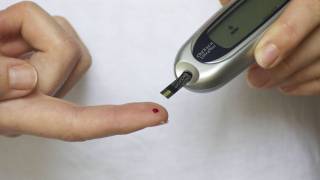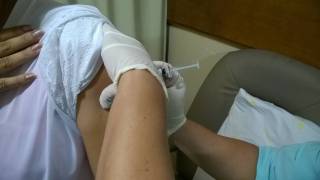Can Rotavirus Vaccines Reduce Type-1 Diabetes Risks

‘There is a growing appreciation that viral infections can have long-lasting impacts, well after the original infection has been cleared,’ said Dr. Kaitlin A. Davis and Dr. Andrew Mehle in a new editorial published in PLOS.
Excepts from this October 10, 2019, editorial are inserted below:
One example is the proposed connection between childhood infections with rotavirus and the subsequent development of type 1 diabetes.
New evidence supports this correlation and suggests that vaccination against rotavirus may contribute to a global decrease in type 1 diabetes prevalence among young children.
This surprising effect of vaccination could be the first example of primary prevention of type 1 diabetes, something not currently possible.
In a powerful demonstration of the positive effects of public health campaigns, mortality associated with rotavirus infection has substantially decreased since the introduction of rotavirus vaccines.
Rotavirus, a member of the Reoviridae family, is a major cause of infantile diarrheal disease worldwide, accounting for over 215,000 deaths annually.
Rotavirus mortality and vaccine efficacy are known to vary significantly by country and environment, and similarly, factors promoting type 1 diabetes incidence are likely to be diverse, said these researchers.
Previously, multiple studies have described an associated decrease in type 1 diabetes incidence following vaccination.
How might rotavirus infection be tied to the development of type 1 diabetes?
Type 1 diabetes is an autoimmune condition characterized by the destruction of beta cells in the pancreas by the body’s own immune system, leading to the functional absence of insulin.
While there are some genetic determinants of type 1 diabetes, the precise triggers of this autoimmune disease are not fully understood.
Interestingly, portions of proteins on the surface of beta cells that are recognized by T cells – the killers of the immune system – are strikingly similar to a rotavirus capsid protein called VP7.
Both the beta-cell protein and its viral doppelganger VP7 are able to stimulate similar T cell responses, and this response can be observed in both humans and animals following infection and vaccination.
Previous studies have directly linked rotavirus infection to the production of antibodies associated with diabetes in young children, and similarly, infections in mice have been linked to pancreatic cell death and hyperglycemia.
Perhaps rotavirus infection trains the immune system to accidentally target beta cells.
Rotarix and RotaTeq are the most routinely used rotavirus vaccines, administered in the first six months of life.
These vaccines include HLA-mimic VP7 sequences and were fully introduced to communities worldwide from 2006-2008.
In studies from both Australia and the United States spanning this time period, type 1 diabetes prevalence decreased coincident with vaccine introduction.
In Australia, reported by Perrett, et al., the number of new cases of type 1 diabetes among children 0-4 years of age decreased by 15% following the introduction of rotavirus vaccines.
Excitingly, this finding was recapitulated in an American cohort, where a 33-37% reduction in the risk of type 1 diabetes was observed following completion of a rotavirus vaccine series.
"Usually, vaccinations are known for providing protection against infections. The rotavirus vaccination differs from the usual thought because it not only protects against the rotavirus infection but it also presents the exciting possibility of decreasing the chances of developing Type I diabetes in children," shared Saad Sajid, Pharmacy Intern for Brookshire Grocery Company.
Thus, if rotavirus infection is a trigger for the development of type 1 diabetes, preventing infections by vaccination would not only reduce viral disease but have the added benefit of reducing type 1 diabetes.
While trends are common between these two diverse studies, there are likely additional factors that contribute to protection.
An analysis of a Finnish cohort reports that associations between rotavirus vaccination and type 1 diabetes incidence were inconclusive.
This may in part be due to sample size variability between the studies, but also highlights the role of geographical and environmental differences in immunity.
If the associations outlined in these studies hold true for multiple groups and persist as children age, these findings could outline at least one ubiquitous factor that affects type 1 diabetes development worldwide.
About the editorial authors:
Kaitlin A. Davis received her Ph.D. in Biology from Johns Hopkins University. She is currently a postdoctoral research associate with Andrew Mehle at the University of Wisconsin Madison studying how ADP-ribosylation of influenza virus proteins regulates viral replication processes.
Andrew Mehle received his Ph.D. in Virology at Harvard University. He continued with postdoctoral training at the University of California Berkeley in the lab of Dr. Jennifer Doudna where his focus shifted to the influenza virus.
Rotavirus vaccine news published by Precision Vaccinations
Our Trust Standards: Medical Advisory Committee











